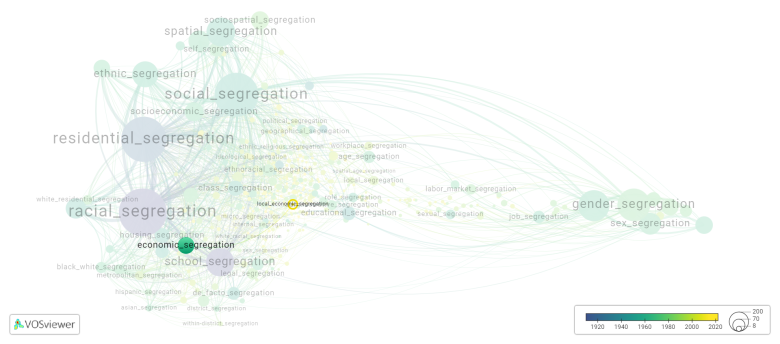Local economic segregation
Date and country of first publication[1]
2022
United States
Definition
Local economic segregation refers to the division of a community into distinct areas or neighborhoods based on income levels and socioeconomic status. In economically segregated communities, there is a significant disparity in wealth and resources between different areas.
This segregation can occur in various ways, including residential segregation, where individuals of similar income levels tend to live in the same neighborhoods. This is often driven by factors such as housing prices, availability of amenities, and access to good quality schools.
Economic segregation can have significant implications for various aspects of life within a community. Here are a few consequences:
1. Limited opportunities: Economic segregation can restrict access to high-quality education, healthcare, employment opportunities, and other essential resources for individuals living in economically disadvantaged areas. This can perpetuate a cycle of poverty and limit upward mobility.
2. Social isolation: Segregation can lead to social isolation and the formation of homogenous communities, where people of similar socioeconomic backgrounds interact mainly within their own group. This lack of interaction and diversity can hinder social cohesion and understanding between different economic groups.
3. Unequal public services: Disadvantaged areas often receive fewer public resources and investment, leading to inadequate infrastructure, poor transportation, and limited access to public amenities such as parks, recreational facilities, and libraries. This can further exacerbate economic disparities within a community.
4. Increased crime rates: Concentrated poverty and limited resources can lead to higher crime rates in economically segregated areas. Lack of economic opportunities, coupled with social exclusion, can contribute to feelings of frustration and hopelessness, leading to higher levels of criminal activity.
Addressing local economic segregation requires a multi-faceted approach. Policymakers can implement strategies such as affordable housing initiatives, neighborhood revitalization programs, and targeted investments in education and healthcare to reduce disparities and promote greater economic integration. Additionally, efforts to promote equal opportunities, job creation, and the provision of adequate public resources can help create more inclusive and equitable communities.
See also
Related segregation forms
Local economic segregation is frequently discussed in the literature with the following segregation forms:
This visualization is based on the study The Multidisciplinary Landscape of Segregation Research.
For the complete network of interrelated segregation forms, please refer to:
References
Notes
- ↑ Date and country of first publication as informed by the Scopus database (December 2023).
Local economic segregation appears in the following literature
Franko W.W., Livingston A.C. (2022). Economic segregation and public support for redistribution. Social Science Journal, 59(3), 375-393. Taylor and Francis Ltd..https://doi.org/10.1080/03623319.2020.1727223

